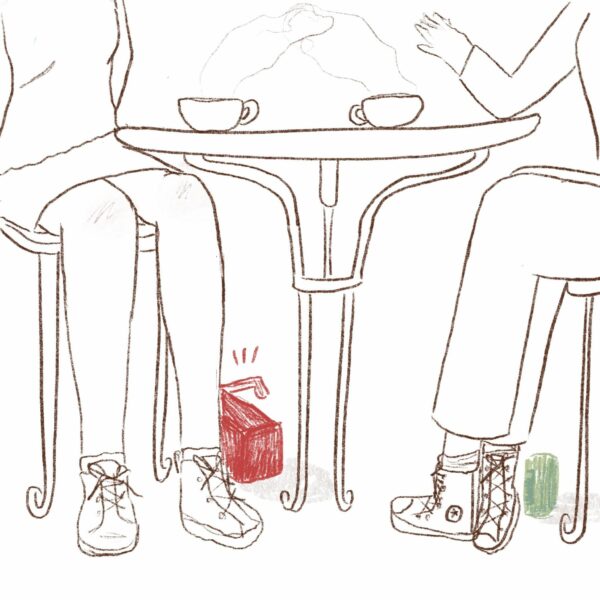When I asked my friends the question ‘what should someone wear to work’ the resounding response – after the initial grunt of confusion – was simply their ‘uniform’. But if I dared to press them more, asking specifically what a woman should wear to work, their faces couldn’t disguise the conversation’s trajectory towards the controversial.

Women’s Fashion in the Work Place and How it dictates sexist stereotypes
Men who were asked the question shifted as if they were trespassing a political territory where they could either team up with the likes of Piers Morgan, or say something too rehearsed and sound like a Pinterest quote. It felt as though I was putting their feminist principles to the test, one with very distinct answers. My own reflections were no easier to sit with; initially I cancelled out the importance of corporate restrictions with the sentiment that there are more damaging ways misogyny is perpetrated on a global scale. I quickly moved on from gaslighting a whole chunk of the population with the realisation that I myself am propped up on a mound of privilege to even be considering this; cis-gendered, have sufficient funds to go ‘workwear shopping’ and so on. It doesn’t take much reflection for me to realise that the roots of feminist theories get tangled when it comes to putting it them into practice. The fraught relationship between feminist thought and reality becomes recognised when I choose to get ‘all dressed up.’ This desire will override my knowledge that due to my clothes, I will be subject to the ‘troublesome two’, degradation and objectification. Simone de Beauvoir would want to set me alight for entertaining my feminine narcissism and dolling up into an erotic object. But, back to picking the brains of said friends, I now asked specific questions such as ‘what do you think a CEO wears?’ and ‘what would you expect a woman professor to wear?’. Most of them determined that intellect and ideas take priority to how one presents themselves, but for a woman to be taken ‘seriously,’ her station must be reflected in her appearance. There is something subversive about correlating a woman’s competency with her appearance that goes beyond the lines of ‘you wouldn’t trust a priest in a party dress’. Look at the disparities between women’s dress codes across different careers, compare the glaring sexualisation of air-hostesses to the business woman’s ‘power-suit’ glamorised in ‘the Wolf of Wall-Street’; it seems women cannot escape the male gaze unless they either resort to plain faces and even plainer clothes or lean into lear. The tendency to justify this with the fact that ‘serious women’ do not have the time for beautification is destructive and maintains the way we police a woman’s appearance. Yet, it seems to be an open public opinion and the ‘inspirational’ quote from H. Jackson Brown Jr “wear something audacious under the most solemn business attire” still features on timelines without any heavy sarcasm.
The recent petitions surrounding a women’s workplace dress code seem to be justified with the theories postulated by sister Simone, but also maintain a heavy emphasis on comfort and choice. As I cautiously researched the 2016-17 legislation to make it illegal to require women to wear heels at work, I uncovered a whole backlog of similar petitions to amend the rules around female dress-code – all of which are injected with similar sentiments. For example, the compulsory wearing of tights was suspended in the 1990’s, not because women wanted to get their legs out, but because the summer made wearing tights intolerable. It seems seductively restrained to ease up the rules around tights, but this movement received pushback from a predominantly male jury. (I don’t advise researching this topic unless you love comments from angry men with bulging forehead veins who want women to be grateful that they get to drop the apron and go to work anyway).
A workplace that values homogeneity and cohesion to promote an ‘efficient’ environment is still idealised across the UK – perhaps best exemplified by reality TV show ‘The Apprentice’, where the boardroom fashion is tailored trousers, pencil skirts and, crucially, high heels. Despite attempts to (Alan)sugar-coat the obligatory femme uniform with equitable phrases such as an ‘equal playing field’, it is obvious that what a woman wears matters I won’t digress into matters of hair – but if you are interested in a study concerning 73 women being fired on the premise of violating the dress-code, Janet Ainsworth’s 2003 paper yields rich and disturbing revelations on the subject.. The elaborate semiotic dress-codes for a workplace uniform sustain the way women are subject to unfair judgments and quick conclusions surrounding their promiscuity or prudishness. The uniform seems to contest the contemporary social appraisal of individual styles and ‘iconic’ fashion moments – so is it futile to hope that the corporate world will soon fast-forward into the 21st century? Or is it the public, myself included, that need to rattle against our stereotypical assumptions and allow women, in thought and in practice, to choose what to wear to work.
Deepali Chabbra
graphic by one our wonderful graphic designers Peggy Mitchell






Leave a Comment